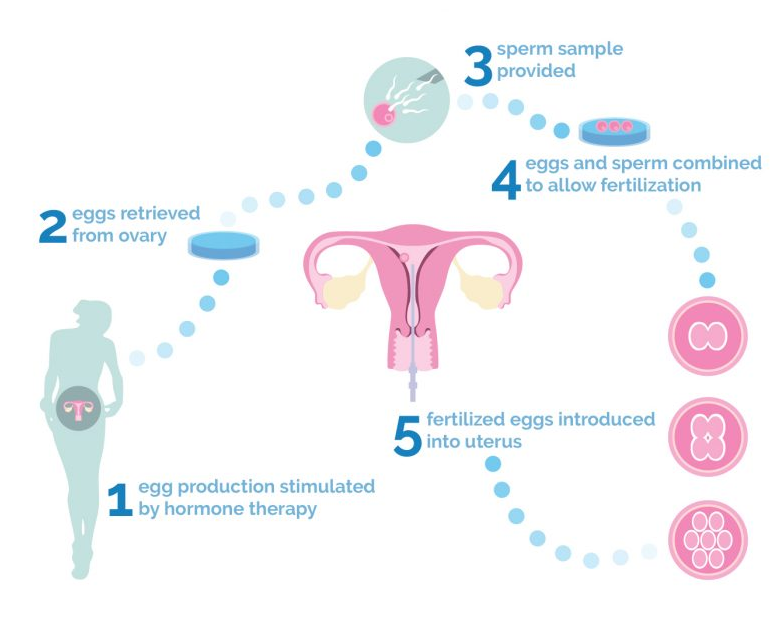What Is a Test Tube Baby?
The term “test tube baby” means a child that is conceived outside a woman’s body. A more complete definition specifies test tube babies as being conceived in a laboratory through the scientific process of In-Vitro Fertilisation (IVF). The use of the words “test tube” is also erroneous because, right from the beginning decades back with Edwards and Steptoe, the lab instrument that they used to mix the eggs and sperm in is a Petri dish.
It can be stated therefore that “test tube baby” is an oversimplified term for a child born through IVF. Hence, there is actually NO difference between IVF and test tube baby.
Test Tube Baby Step-by-Step Process
Ever since that successful attempt in 1978, numerous advancements have been made to IVF but the core procedure remains the same.

Step 1: Egg production stimulated by hormone therapy
Prior to egg retrieval, the woman is prescribed injectable hormones of GnRHa and gonadotrophins to promote the synchronous growth and maturation of the follicles inside her ovaries. Final maturation of the eggs is accomplished through the injection of HCG 36 hours before egg collection.
Step 2: Eggs retrieved from ovary
The woman is given a mild sedative or anaesthetic so that she won’t feel pain or other discomforts during egg retrieval. Using an ultrasound vaginal probe with a fine hollow needle attached to it, the fertility specialist aspirates eggs from the woman’s ovaries. These samples are promptly brought to the laboratory.
Step 3: Sperm Sample Provided
On the same day as the egg retrieval, the man is required to produce a fresh semen sample.
Step 4: Eggs and sperm combined to allow fertilisation
The sperm and eggs are mixed together in a Petri dish and then place inside an incubator for a few days. During this period, the fertility specialist checks for signs of fertilisation and monitors the growth of the embryos.
Step 5: Fertilized eggs introduced into the uterus
On the day of embryo transfer, two or three embryos are transferred into the uterus of the woman with the use of a fine catheter. To strengthen and support the uterine lining and increase the possibility of implantation, she is advised to administer progesterone or HCG daily.
A common question that is asked is how painful are IVF injections? Most women experience minimal pain and discomfort with the hormone injections, describing them as being similar to the insulin injections for diabetes. Other women claim that the more painful shots are those of progesterone because it is oil-based and requires the use of a needle with a larger bore.
Test Tube Babies: Pros and Cons
The pros and cons of test tube babies are the same as the advantages and disadvantages of IVF.
The main advantage of IVF is that it can circumvent a number of fertility problems including…
- Unexplained infertility
- Blocked fallopian tubes
- Male factor infertility (commonly done together with IntraCytoplasmic Sperm Injection or ICSI)
- Older patients who desire to have a child
- Low ovarian reserve
- Polycystic Ovary Syndrome (PCOS)
- Endometriosis
- Premature Ovarian Failure
An IVF procedure is not without risks and just like with most painstaking medical procedures, it can cause emotional and mental stress on couples. In terms of costs, Singaporeans could avail of government co-funding and Medisave resources to finance the procedure.
Who Should Consider IVF Treatment?
Any couple who has been unsuccessful for a year in their attempts to have a child should consider the possibility of undergoing fertility treatments. It is very important that they consult with a fertility specialist in order for the cause of their infertility to be correctly diagnosed so that the right treatment will be given.
